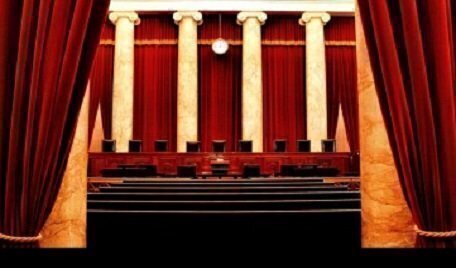Over the dissents of four Justices, the Supreme Court refused on Friday to allow the Trump Administration to put back into effect its new restrictions on asylum for foreign nationals entering the U.S. illegally across the Mexico border. The plea needed five votes to support the resumption of the policy but fell one short.
 The ruling, though temporary in nature, was nevertheless a significant setback for the Trump Administration as it continues to adopt more stringent controls to deal with illegal entries into the United States from Latin American countries.
The ruling, though temporary in nature, was nevertheless a significant setback for the Trump Administration as it continues to adopt more stringent controls to deal with illegal entries into the United States from Latin American countries.
Chief Justice John G. Roberts, Jr., did not vote along with the Court’s other conservatives to grant the government request. The Administration had the support of Justices Samuel A. Alito Jr., Neil M. Gorsuch, Brett M. Kavanaugh, and Clarence Thomas. This marked the first time that Kavanaugh, new to the Court this term, has cast a vote in favor of a controversial policy of the Trump Administration.
The Court issued only a simple order, without explanation for any of the votes, that kept intact a California’s federal judge’s temporary but nationwide ban on enforcing the asylum limitations. The issue could return to the Justices after lower courts rule more definitively on the challenge being pursued to the new restrictions by four organizations that handle legal claims for those seeking asylum.
Under the Administration policy, the government declared that it would not allow any foreign national to seek asylum if that individual had entered the U.S. illegally and crossed the U.S.-Mexico border at any point other than an official reception point – called a “port of entry.”
The nationwide order against enforcement of that policy was based on a temporary filing that the challengers probably will be able to prove, when the issue is fully tested in court, that the policy violates the federal law governing foreign nationals’ access to asylum – the kind of relief that enables a person fleeing from persecution and torture in their home country to gain a chance to live in the U.S. as a refugee.
The Administration had asked the Supreme Court to set aside the nationwide order against that policy, arguing that the restriction was necessary to deal with “an ongoing crisis” that was said to be the result of a wave of new illegal entries along the southern border. The government lawyers had argued to the Court that it was well within federal powers to impose even a flat ban on who can gain asylum, and this policy was not even a flat ban but only a temporary restriction during the peak of the crisis.
With the denial of any relief by the Supreme Court from the federal judge’s order, the policy – set to be in effect for 90 days – probably will not be in effect at any point in that period, unless lower courts were to rule quickly on an Administration appeal formally contesting the nationwide order.
The judge’s order against the asylum policy was one of two recent setbacks in federal court for the Trump Administration as it sought to deal with legal issues over asylum as part of its efforts to impose new controls on entry across the U.S.-Mexico border. Another federal judge has temporarily barred a separate government policy that denied asylum eligibility to foreign nationals who were seeking protection after fleeing from domestic violence in their home countries.
Lyle Denniston has been writing about the Supreme Court since 1958. His work has appeared here since mid-2011.






